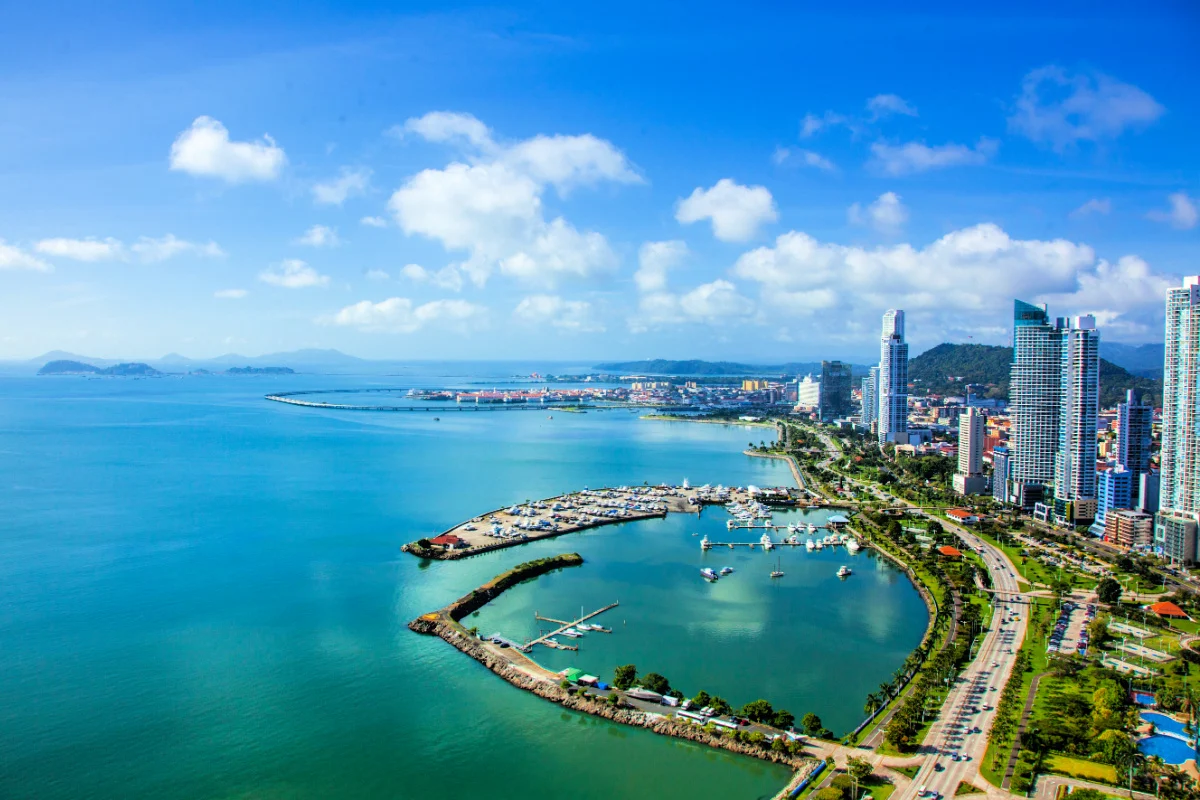Digital nomads are back to Latin America in droves now that countries in the region have normalized entry rules and even launched migration paths that are unique to the category.
LatAm (as it is commonly called in the short form) is openly challenging Europe and Southeast Asia for the title of number one nomad hotspot, and one nation in particular is playing a key role in advancing that cause.
Sitting on the Central American isthmus and bordering Costa Rica and Colombia, Panama is simply the perfect digital nomad destination, and these are 4 of the main reasons why:
Stunning Natural Scenery
Though they are definitely not a homogenous bunch, and there are subcategories within the group, it’s a fact most digital nomads favor warmer, tropical climates when picking a new country to call home, even if temporarily.
That is because a majority of them hail from big cities in naturally colder countries in the Northern Hemisphere, where the nature may not be as abundant, and winters can be particularly harsh.

In a sense, it’s no surprise as many as 80,000 Americans are now residing in Panama, as the country is widely known for its wealth of natural resources and tropical weather.
With coastlines on both the Caribbean and Pacific Seas and its year-round warm climate, it is an incredibly attractive destination not only for tourists and retiring expats but especially for remote workers looking for a higher quality of life.
Outside Panama City, the country’s capital and largest city, nomads will find a plethora of protected reserves, jungle parks, and as much as 1,771 miles of combined coastline (both Caribbean and Pacific) dotted with quaint seaside resort towns.

If it’s a slow-paced life you’re craving, and the sight of tall coconut trees lining soft sands bounded by the azure Pacific has been in your dreams lately, you should definitely consider relocating to Bocas del Toro, one of the best-equipped towns in Colon, a paradisaical island surrounded by teal-colored waters.
Famous for its nomad-friendly facilities, including internet cafes and long-term rentals, and unspoiled nature, it is one of Panama’s most highly sought-after nomad hubs.
Better Infrastructure Than Most Central American Countries
The better-than-average infrastructure is yet another reason why nomads are enamored with Panama.

It’s no secret they tend to gravitate towards countries where there is already a well-established expat community, as this helps with integration, and the presence of foreigners and the influx of dollars is known to boost development in any given city.
Panama City is easily one of the most nomad-friendly capitals in Latin America:
It is large, but not overwhelmingly like São Paulo; as a regional hub for business, it boasts an entrepreneurial vein and a plethora of coworking spots, much like Mexico City; the Quality of Life score is ‘good’, as reported by NomadList, and safety levels are ‘okay’.

Other popular nomad centers in Panama include Santiago, one of the country’s most traditional and best-preserved colonial cities, home to a landmark Spanish-built cathedral, Colón, a medium-sized city straddling the Caribbean coast and fast-growing financial hub, and third-largest city, Tocumen.
Outside urban zones, internet connectivity may not be as strong, and nomad infrastructure may be lacking, especially in the heart of the jungle, but it still doesn’t take away from the fact that Panamanian cities are very well-prepared to host remote workers.
Panama Is Relatively Affordable

Affordability is yet another important factor behind Panama’s soaring popularity with nomads.
A majority of long-term travelers belonging to this category is budget-conscious, meaning they carefully pick destinations based on affordability and how far their hard-earned dollars can stretch, as in most cases, they are freelance writers used to planning their financial year well in advance.
In this regard, Panama is incredibly cheap for American and European nomads, with large cities like the capital requiring month-long residents to spend on average $2,575 per month, including food, accommodation, and leisure activities.

It is certainly not as cheap as neighboring Colombia, where development is not as pronounced, and thus, the cost of living is a lot lower, but seeing that the average nomad makes anywhere between $50,000 and $80,000 a year, Panama is a pretty safe bet at a temporary relocation that will not break the bank.
As reported by Numbeo, every time you eat a meal at an inexpensive restaurant will set you back by only $10, on average, though mid-range to high-end restaurants can bill you as much as $60.
Additionally, rent is up to 38.2% lower than the average Western city, like Paris or London.
Panama Is Open To Digital Nomads

Finally, Panama has been leading travel trends in the nomad community lately due to its friendly policies towards long-term residents and digital nomads.
Historically, the nation has always been open to foreign investment, serving as the natural gateway between South and North America and thus benefitting from cross-continental trade and the influx of foreign capital.
It’s never been exactly difficult to obtain permanent residency in Panama, but when it comes to digital nomads specifically, they benefit from their own ‘Short Term Remote Worker‘ visa, enabling them to remain in the territory for up to 9 months initially.

Before that period expires, they are invited to renew their visa for an additional 9 months, without leaving the territory, if they so wish, with each application costing a very reasonable $300.
Every first application must be made through a Panamanian Embassy or Consulate in the applicant’s home country or current country of residence, and only those who meet the minimum annual income of around $36,000 can qualify.
Being a digital nomad in Panama under the Short Term Remote Worker visa may make you eligible for some form of tax exemption.
If the bureaucracy sounds discouraging to you, you can still relocate to Panama for up to 180 days, or 6 months, as a tourist, if you hold American citizenship.
Credit: Source link

